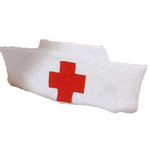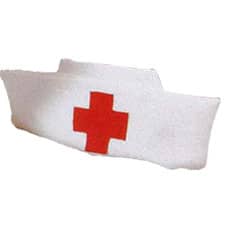 CENTERS FOR DISEASE CONTROL AND PREVENTION (CDC) DEFENDS RELIANCE ON "ANTIQUATED" H1N1 VACCINE PRODUCTION DESPITE SHORTAGE
CENTERS FOR DISEASE CONTROL AND PREVENTION (CDC) DEFENDS RELIANCE ON "ANTIQUATED" H1N1 VACCINE PRODUCTION DESPITE SHORTAGE
ROBERT LOWES
Editor Note: CDC explains why it is taking time to make sure vaccine is safe. Adjuvant-modified vaccines are not approved in the United States.
Carol Ware Duff MSN, BA, RN
October 23, 2009 — Although disappointed with lower-than-expected supplies of the H1N1 influenza vaccine, the director of the US Centers for Disease Control and Prevention (CDC) said today that his agency would not switch to newer and possibly more efficient manufacturing methods, given the relatively mild nature of the pandemic.
"Even if we had a new vaccine, I’m not sure we’d use it in the midst of a pandemic which has a level of severity similar to seasonal flu," said CDC Director Thomas Frieden, MD, MPH, during a press conference. "We won’t go out with a new vaccine until we are completely confident of its safety."
The viral material for the 251 million doses of H1N1 vaccine ordered by the federal government is being grown in chicken eggs, the traditional manufacturing method. The government is interested in eventually growing viruses in cell cultures — a technique touted for faster production — but this method has not yet been approved by the US Food and Drug Administration. Likewise, other countries stretch their supply of vaccine by adding adjuvants that amplify the immune response. However, adjuvant-modified vaccines are not approved in the United States either.
Dr. Frieden said the CDC might consider using a new manufacturing technology if the country was hit with a pandemic strain that was not only widespread but caused severe illness in greater numbers than those seen with the H1N1 influenza virus. "The risk–benefit ratio would be different," he said.
The H1N1 virus has killed more than 1000 people and hospitalized more than 20,000 in the United States so far this year, according to Dr. Frieden. Forty-six states are currently reporting widespread H1N1 influenza — a level of disease that usually characterizes the peak of an ordinary influenza season, he said. "To be at the peak of flu season in October is extremely unusual."
"Even If You Yell at Them, They Don’t Grow Faster"
The CDC originally estimated that vaccine manufacturers would have produced roughly 40 million doses of H1N1 vaccine by the end of October. However, the agency has revised that figure downward to 28 million doses. As of today, 16.1 million doses were available for states to order, according to Dr. Frieden, and as of October 21, some 11.3 million doses had been shipped. Echoing what other CDC officials have said previously, Dr. Frieden urged patience.
"In the coming weeks," he said, "we will see steady increases in the amount of vaccine available."
Dr. Frieden defended the egg-based method for producing vaccine as reliable but "antiquated," and not well-suited to responding to a pandemic. "The tools we have aren’t as modern as we would like, or as rapid," he said. "Even if you yell at [the vaccine strains], they don’t grow faster."
"We have to remember that the enemy here is the virus," Dr. Frieden pointed out.
Detailed information about snags in the manufacturing process emerged yesterday during a meeting of the Advisory Committee on Immunization Practices, an expert panel that makes recommendations to the CDC. Bruce Gellin, MD, MPH, director of the National Vaccine Program Office of the Department of Health and Human Services, told the committee that summer production of H1N1 vaccine lagged behind schedule because yields of vaccine immunogen from chicken eggs fell short of those gained in initial experiments. "For some manufacturers, it was 3- to 4-fold less than expected," said Dr. Gellin.
Manufacturers tweaked their production methods to boost immunogen yield, so that it equals or even surpasses the initial projections, but this increased efficiency will not make a difference in H1N1 vaccine supplies for at least several weeks, Dr. Gellin said. Delays in producing seasonal flu vaccine also have been a factor because the same set of manufacturers makes both types of vaccine. In addition, facilities that package both vaccines have experienced interruptions.

Carol graduated from Riverside White Cross School of Nursing in Columbus, Ohio and received her diploma as a registered nurse. She attended Bowling Green State University where she received a Bachelor of Arts Degree in History and Literature. She attended the University of Toledo, College of Nursing, and received a Master’s of Nursing Science Degree as an Educator.
She has traveled extensively, is a photographer, and writes on medical issues. Carol has three children RJ, Katherine, and Stephen – one daughter-in-law; Katie – two granddaughters; Isabella Marianna and Zoe Olivia – and one grandson, Alexander Paul. She also shares her life with her husband Gordon Duff, many cats, and two rescues.
ATTENTION READERS
We See The World From All Sides and Want YOU To Be Fully InformedIn fact, intentional disinformation is a disgraceful scourge in media today. So to assuage any possible errant incorrect information posted herein, we strongly encourage you to seek corroboration from other non-VT sources before forming an educated opinion.
About VT - Policies & Disclosures - Comment Policy





